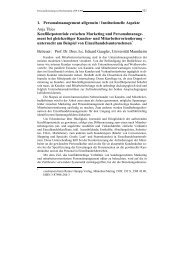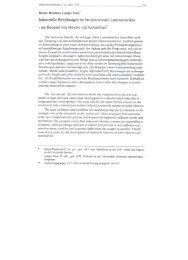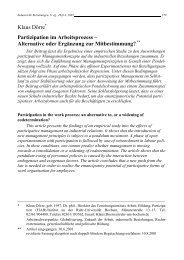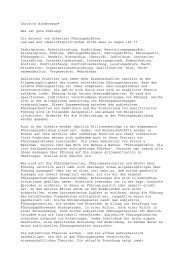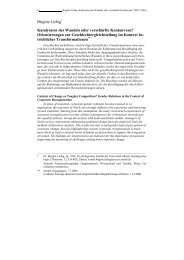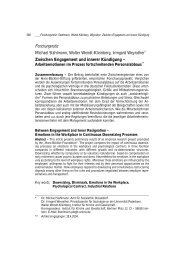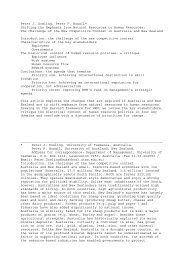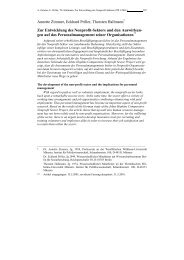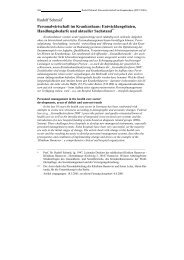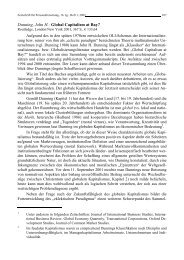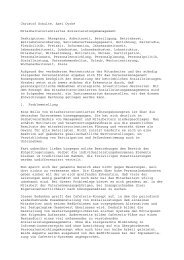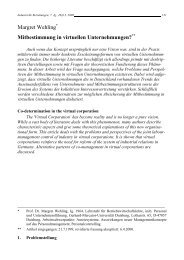1/98 - Rainer Hampp Verlag
1/98 - Rainer Hampp Verlag
1/98 - Rainer Hampp Verlag
Create successful ePaper yourself
Turn your PDF publications into a flip-book with our unique Google optimized e-Paper software.
Roger Bennett<br />
the field (e.g., Roos et al. 1992; Benito and Welch 1994; Welch 1996). Such<br />
investigations generally concluded that very many CEE business practices and<br />
networks continued to rely on systems, contacts and protocols developed during<br />
the communist era and that these had proven woefully inadequate for satisfying<br />
the marketing needs of competing privatised firms. Hooley et al’s (1996) survey<br />
of 2311 Hungarian, Polish and Bulgarian enterprises’ approaches to marketing<br />
(including marketing strategies and how they organised their marketing activities)<br />
found, moreover, that marketing was undertaken at an extremely<br />
rudimentary level in these countries, focusing almost exclusively on the<br />
immediate short term. Barely a fifth of respondents believed that marketing<br />
played a significant role within their firms; implementation skills were limited,<br />
and there was ‘poor understanding of what marketing is about’ (p.80). Further<br />
problems highlighted by empirical studies into CEE marketing environments<br />
include attitudinal barriers to the adoption of marketing philosophies, lack of<br />
marketing education, the casual assignment of marketing responsibilities to nonspecialist<br />
staff, absence of market research data and facilities, widespread<br />
ignorance of the benefits of marketing orientation, confusion of ‘marketing’<br />
with ‘selling’, scant regard for product quality, widespread ignorance of the<br />
importance of pricing policy, and poor commercial infrastructure (Ennew et al.<br />
1993; Lascu et al. 1993; Bennett 1994; Welch 1996).<br />
The present research sought to explore these and related matters, in depth, via an<br />
examination of the situations pertaining within specific examples of West-East<br />
technology transfers known to involve the provision by the Western partner of<br />
assistance with the marketing of the end product emerging from the<br />
arrangement. Although the assumption by one company of partial (or even full)<br />
responsibility for another firm’s marketing efforts commonly occurs within<br />
domestic collaborative business arrangements (e.g. if one firm has superior<br />
distribution systems for carrying the partner’s product, or through the setting up<br />
of a joint marketing subsidiary - see Anderson/ Narus 1990; Bucklin/ Sengupta<br />
1993); little is known about the precise mechanisms whereby enterprises<br />
actually transmit marketing know-how from one organisation to another,<br />
particularly in the international context. Hence the current investigation<br />
attempted to pinpoint relevant issues and to present some initial evidence on<br />
how MKH was undertaken by companies engaged in West-East technology<br />
transfer and where the Western partner contributed to the marketing of a CEE<br />
firm’s goods. The study aimed to identify the problems involved and to<br />
recommend an agenda for future research into this important but unexplored<br />
field.<br />
Theory<br />
Theoretical propositions from a number of areas can be drawn upon to generate<br />
relevant questions concerning MKH transfer and a specification of how MKH<br />
JEEMS 1/ 19<strong>98</strong> 9




